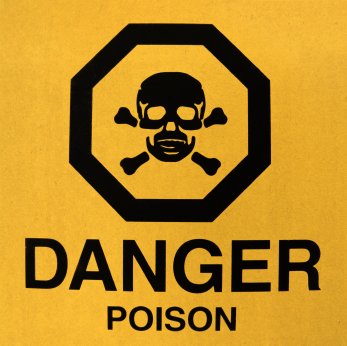Toxicology: An Introduction
 |
| Photo Credit: http://www4.utsouthwestern.edu/toxicology/images/toxicology%20logo%20with%201%20skull%20006.gif |
Toxicology..
 |
| Photo Credit: http://www.adobetutorialz.com/content_images/AdobePhotoshop/ART-D/tutorial439/umbrella-corporation-logo.jpg |
- It is the study of poisons.
- It is also the study of the adverse effects of chemicals on living organisms.
- It is the study of symptoms, mechanisms, treatments and detection of poisoning, especially the poisoning of people.
- It is the study of adverse effects on humans of prophylactic and therapeutic drugs, food and beverage additives, and industrial chemicals incorporated into consumer products.
The Four Major Disciplines within Toxicology are:
Mechanistic Toxicology
Elucidates the cellular and biochemical effects of toxins. These studies provide a basis for rational therapy design and the development of tests to assess the degree of exposure of poisoned individuals.
Descriptive Toxicology
Uses the results from animal experiments to predict what level of exposure will cause harm in humans. this process known as risk assessment.
Forensic Toxicology
Primarily concerned with the medicolegal consequences of toxin exposure. A major focus of this area is establishing and validating the analytic performance of the methods used to generate evidence in legal situations, including the cause of death.
Clinical Toxicology
The study of interrelationships between toxin exposure and disease states. This area emphasizes not only diagnostic testing but also therapeutic intervention.
In simple words, Toxicology is usually considered part of chemistry, mainly because the methods used to evaluate toxins qualitatively and quantitatively are best suited to this area.
What is Toxicity Screening?
A toxicology screen refers to various tests to determine the type and approximate amount of legal and illegal drugs a person has taken.
Mechanistic Toxicology
 |
| Photo Credit: http://images.borders.com.au/images/bau/97804152/9780415284592/0/0/plain/mechanistic-toxicology-the-molecular-basis-of-how-chemicals-disrupt-biological-targets.jpg |
Elucidates the cellular and biochemical effects of toxins. These studies provide a basis for rational therapy design and the development of tests to assess the degree of exposure of poisoned individuals.
Descriptive Toxicology
Uses the results from animal experiments to predict what level of exposure will cause harm in humans. this process known as risk assessment.
Forensic Toxicology
 |
| Photo Credit: http://forensicfact.files.wordpress.com/2008/05/vi_b_323.jpg |
Primarily concerned with the medicolegal consequences of toxin exposure. A major focus of this area is establishing and validating the analytic performance of the methods used to generate evidence in legal situations, including the cause of death.
Clinical Toxicology
 |
| Photo Credit: http://farm4.static.flickr.com/3530/3951143454_36b69b9178.jpg |
The study of interrelationships between toxin exposure and disease states. This area emphasizes not only diagnostic testing but also therapeutic intervention.
In simple words, Toxicology is usually considered part of chemistry, mainly because the methods used to evaluate toxins qualitatively and quantitatively are best suited to this area.
What is Toxicity Screening?
| Photo Credit: http://www.fluofarma.com/upload/_MG_4538_450pixels.jpg |
A toxicology screen refers to various tests to determine the type and approximate amount of legal and illegal drugs a person has taken.
- Acute Toxicity- administration of progressively larger single dose up to the lethal dose.
- Subacute/ Chronic Toxicity- administration of multiple doses to detect any adverse effects.
- Mutagenecity- detection of possible ability to induce genetic alteration (mutation).
- Carcinogenecity- detection of possible ability to induce abnormal clonal uncontrolled proliferation of genetically altered cells.
- Teratogenicity- detection of possible deleterious effects on the developing fetus.
What is Poison?
 |
| Photo Credit: http://subversify.com/wp-content/uploads/2010/06/poison.jpg |
Are substances that cause disturbances to organisms, usually by chemical reaction or other activity on the molecular scale, when a sufficient quantity is absorbed by an organism. The fields of medicine (particularly veterinary) and zoology often distinguish a poison from a toxin, and from a venom. Toxins are poisons produced by some biological function in nature, and venoms are usually defined as toxins that are injected by a bite or sting to cause their effect, while other poisons are generally defined as substances absorbed through epithelial linings such as the skin or gut.
What is Food Poisoning?
Food poisoning comes from eating foods that contain germs like bad bacteria or toxins, which are poisonous substances. Bacteria are all around us, so mild cases of food poisoning are common. You may have had mild food poisoning — with diarrhea and an upset stomach — but your mom or dad just called it a stomach bug or stomach virus.
You might think the solution is to get rid of all the bacteria. But it isn't possible and you wouldn't want to do it, even if you could. Bacteria are all around us, including in food, and sometimes they can be good for us. It's confusing, but one thing is for sure — the bacteria in the rotten leftovers weren't the good-for-you kind. But you can learn how to avoid those bad germs in food.
Foods from animals, raw foods, and unwashed vegetables all can contain germs that cause food poisoning. The most likely source is food from animals, like meat, poultry (such as chicken), eggs, milk, and shellfish (such as shrimp).
Some of the most common bacteria are:
- Salmonella- raw/ contaminated meat, poultry, meat, egg yolks.
- Campylobacter- meat and poultry.
- Shigella- raw, ready to eat.
- Cryptosporidium- water, fruit, salad vegetables.
- E.coli- contaminated water, beef (fecal).
- Yersinia- inadequately cooked, raw pork.
- Listeria- Inadequately cooked/ raw pork.
- Vibrio- oysters and other shellfish.
- Cyclospora- imported fresh produce.
What is the Treatment?
 |
| Photo Credit: http://edu.glogster.com/media/4/36/83/49/36834902.gif |
- Antidote- is a chemical that will counteract the effects of a poison. If administered soon enough and in sufficient quantities, an antidote can save the life of a human or animal that has been poisoned.
- Chemical Antidote- combine with the poison and inactivates it.
- Physiologic Antidote- opposes the actions of the poison.
- Specific Antidote- Tannic Acid strong tea can precipitate Strychnine; Apomorphine; Cinchona Alkanoids; Nicotine and Cocaine can neutralize Zinc, Cobalt, copper, Mercury, Nickel and Lead.
References:
- Clinical Chemistry: Techniques, Principles Correlations, 6th Edition by Michael L. Bishop, Edward P. Fody and Larry E. Schoeff
- http://www.nlm.nih.gov/medlineplus/ency/article/003578.htm
- http://www.news-medical.net/health/Toxicology-What-is-Toxicology.aspx
- http://kidshealth.org/kid/ill_injure/sick/food_poisoning.html
- http://www.wisegeek.com/what-is-an-antidote.htm

